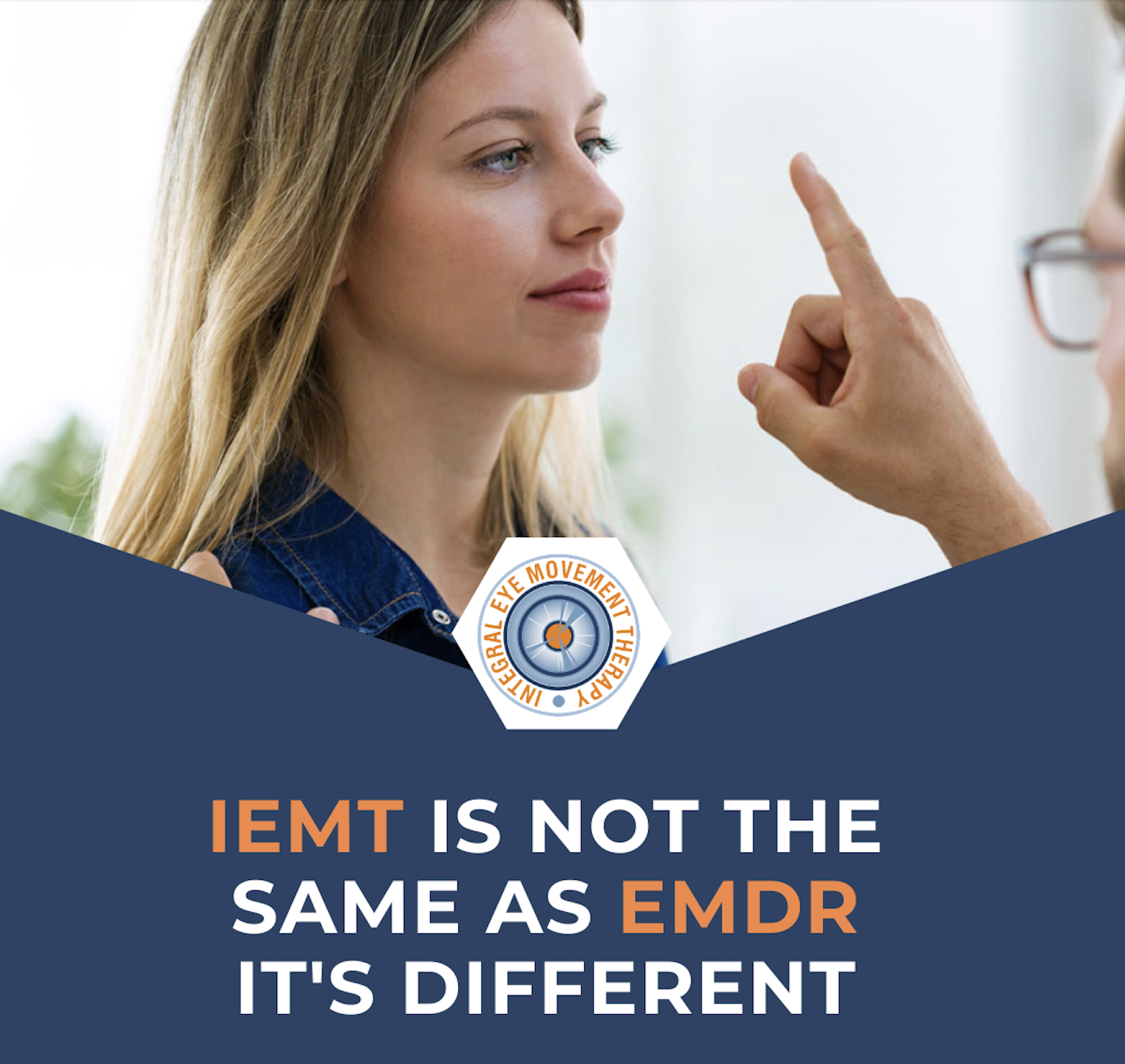

Many are calling IEMT, or Eye Movement Therapy, the new EMDR. So, what’s the difference ?
First, it’s important to acknowledge that Integral Eye Movement Therapy (IEMT) doesn’t make any claims. It’s a new modality, and people are still doing research on it. There are a few studies that are promising, but it’s really not known exactly how it works and exactly what it’s doing. It’s certainly not a miracle cure, and doesn’t work for everyone.
As an Attachment Specialist I sought out IEMT over EMDR. Why? Well, I was trained in the 3 pillar model and Ideal Parent Figure Protocol taught by Daniel Brown and David Elliott.
Dr. Brown unfortunately died this past year, but he was one of the most influential psychologists of our day, and he had some concerns with EMDR.
Just a little more on who he was, Daniel Brown, Ph.D. was Associate Clinical Professor of Psychology at Harvard Medical School and served on the faculty for over 38 years.
- An author of 24 books, and winner of the 1999 Guttmacher Award from the American Psychiatric Association and the American Academy of Psychiatry & Law for outstanding contribution to forensic psychiatry.
- As an expert legal witness, Dr. Brown has testified in over 200 child abuse cases and served as an expert witness for prosecutors at the International War Crimes Tribunal, helping them establish a standard of evidence for victims of war atrocities.
- The Three Pillars treatment method has garnered praise across the scientific and medical community, which was the recipient of the 2018 ISST-D Pierre Janet Writing Award.

He wrote ATTACHMENT DISTURBANCES IN ADULTS: TREATMENT FOR COMPREHENSIVE REPAIR, which I trained in.
It was winner of the 2018 International Society for the Study of Trauma and Dissociation (ISSTD) Pierre Janet Writing Award.
A comprehensive treatment approach for the repair and resolution of attachment disturbances in adults, for use in clinical settings.
He pointed out that in many attachment disorders EMDR could make things worse, despite being a great benefit to many others. In disorganized attachment especially EMDR tended to make people’s minds MORE disorganized.
So, I trained in IEMT and find that a more gentle process.
Now. The differences.

EMDR (Eye Movement Desensitization and Reprocessing) is a type of psychotherapy that was originally developed to treat individuals who have experienced traumatic events such as physical or sexual abuse, combat, or natural disasters. It uses elements of cognitive-behavioral therapy along with bilateral stimulation, such as eye movements, taps or tones, to help individuals process traumatic memories and reduce symptoms of post-traumatic stress disorder (PTSD) and other conditions such as anxiety and depression.
IEMT (Integral Eye Movement Therapy) is a therapy method that is based on EMDR and developed by Andrew T. Austin, a UK-based therapist. It is a method for resolving negative thoughts, emotions, and memories that are causing problems in an individual’s life. Like EMDR, IEMT uses elements of cognitive-behavioral therapy and bilateral stimulation, but it places more emphasis on the use of specific language patterns to help clients reframe and change the way they think about the memory.

In any case, you ought to speak to a specialist before deciding which is right for you.
Feel free to contact me with any questions or book a free consultation.
